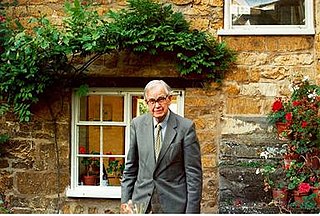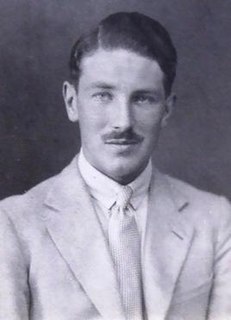 W
WSir Frank Ezra Adcock, was a British classical historian who was Professor of Ancient History at the University of Cambridge between 1925 and 1951. In addition to his academic work, he also served as a cryptographer in both World War I and World War II.
 W
WIrene Jessie "Mouse" Brown was an author and codebreaker who worked at Bletchley Park in Buckinghamshire in Hut 6 during the Second World War. She was employed as a linguist and translator working in the Registration Room and the main Decoding Room.
 W
WDorothy Du Boisson, MBE was a code breaker stationed at Bletchley Park during World War II.
 W
WArthur Wallis Exell OBE was initially an assistant and later Deputy Keeper of Botany at the British Museum during the years 1924–1939 and 1950–1962. A noted cryptographer, taxonomist and phytogeographer, he was notable for his furthering of botanical exploration in tropical and sub-tropical Africa, and was an authority on the family Combretaceae.
 W
WCecilia Elspeth Giles CBE was a British university administrator and a Bletchley Park veteran.
 W
WIrving John Good was a British mathematician who worked as a cryptologist at Bletchley Park with Alan Turing. After the Second World War, Good continued to work with Turing on the design of computers and Bayesian statistics at the University of Manchester. Good moved to the United States where he was professor at Virginia Tech.
 W
WKenneth James Le Couteur was a British physicist who was the foundation Professor of Theoretical Physics at the Australian National University in Canberra. During World War II he worked at Bletchley Park as a codebreaker.
 W
WLeopold Samuel Marks, was an English writer, screenwriter, and cryptographer. During the Second World War he headed the codes office supporting resistance agents in occupied Europe for the secret Special Operations Executive organisation. After the war, Marks became a playwright and screenwriter, writing scripts that frequently utilised his war-time cryptographic experiences. He wrote the script for Peeping Tom, the controversial film directed by Michael Powell which had a disastrous effect on Powell's career, but was later described by Martin Scorsese as a masterpiece. In 1998, towards the end of his life, Marks published a personal history of his experiences during the war, Between Silk and Cyanide, which was critical of the leadership of SOE.
 W
WRolf Noskwith was a British businessman who during the Second World War worked under Alan Turing as a cryptographer at the Bletchley Park British military base.
 W
WCaptain Raymond C. "Jerry" Roberts, MBE was a British wartime codebreaker and businessman. During the Second World War, Roberts worked at the Government Code and Cypher School (GC&CS) at Bletchley Park from 1941 to 1945. He was a leading codebreaker and linguist, who worked on the Lorenz cipher system – Hitler's most top-level code.
 W
WThe Far East Combined Bureau, an outstation of the British Government Code and Cypher School, was set up in Hong Kong in March 1935, to monitor Japanese, and also Chinese and Russian (Soviet) intelligence and radio traffic. Later it moved to Singapore, Colombo (Ceylon), Kilindini (Kenya), then returned to Colombo.
 W
WOliver Strachey CBE, a British civil servant in the Foreign Office, was a cryptographer from World War I to World War II.
 W
WAlan Mathison Turing was an English mathematician, computer scientist, logician, cryptanalyst, philosopher, and theoretical biologist. Turing was highly influential in the development of theoretical computer science, providing a formalisation of the concepts of algorithm and computation with the Turing machine, which can be considered a model of a general-purpose computer. Turing is widely considered to be the father of theoretical computer science and artificial intelligence.
 W
WWilliam Thomas Tutte OC FRS FRSC was an English and Canadian codebreaker and mathematician. During the Second World War, he made a brilliant and fundamental advance in cryptanalysis of the Lorenz cipher, a major Nazi German cipher system which was used for top-secret communications within the Wehrmacht High Command. The high-level, strategic nature of the intelligence obtained from Tutte's crucial breakthrough, in the bulk decrypting of Lorenz-enciphered messages specifically, contributed greatly, and perhaps even decisively, to the defeat of Nazi Germany. He also had a number of significant mathematical accomplishments, including foundation work in the fields of graph theory and matroid theory.
 W
WJohn Wallis was an English clergyman and mathematician who is given partial credit for the development of infinitesimal calculus. Between 1643 and 1689 he served as chief cryptographer for Parliament and, later, the royal court. He is credited with introducing the symbol ∞ to represent the concept of infinity. He similarly used 1/∞ for an infinitesimal. John Wallis was a contemporary of Newton and one of the greatest intellectuals of the early renaissance of mathematics.
 W
WMajor Neil Leslie Webster was a British Army officer, who worked in intelligence in World War II. He was a key figure in radio intelligence and cryptography who worked in the Fusion Room at Bletchley Park and was closely involved in the hunt for "cribs" for the Enigma machine. Before the war he worked as a literary agent and after it as a civil servant for the Central Office of Information.
 W
WWilliam Gordon Welchman was a British-American mathematician. During World War II, he worked at Britain's secret codebreaking centre, "Station X" at Bletchley Park, where he was one of the most important contributors. After the war he moved to the US, and worked on the design of military communications systems.
 W
WSir Charles Wheatstone FRS FRSE DCL LLD, was an English scientist and inventor of many scientific breakthroughs of the Victorian era, including the English concertina, the stereoscope, and the Playfair cipher. However, Wheatstone is best known for his contributions in the development of the Wheatstone bridge, originally invented by Samuel Hunter Christie, which is used to measure an unknown electrical resistance, and as a major figure in the development of telegraphy.
 W
WEdward Willes was an Anglican bishop who was Bishop of St David's and later Bishop of Bath and Wells and one of the most prominent English cryptanalysts of his time.